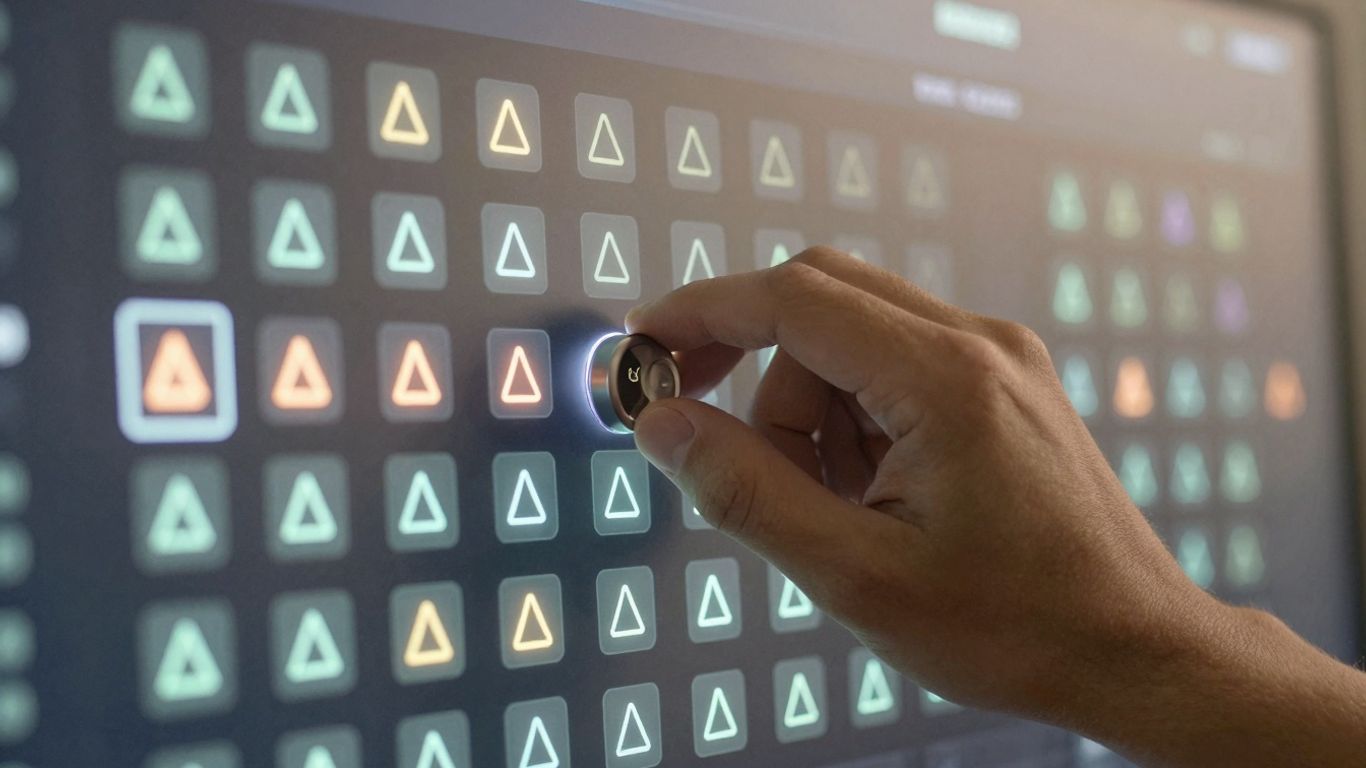[ newsletter ]
Stay ahead of Web3 threats—subscribe to our newsletter for the latest in blockchain security insights and updates.
Thank you! Your submission has been received!
Oops! Something went wrong. Please try again.
Master blockchain security audits with this deep dive into protocol vulnerabilities. Learn essential techniques, uncover specific risks, and secure smart contracts.





So, you're interested in how to make sure blockchain stuff is actually safe? It's a big topic, and honestly, a lot of people get tripped up by the details. We're going to talk about checking these systems, called blockchain security audits, to find weak spots before bad guys do. Think of it like checking your house for unlocked windows before you go on vacation. We'll cover why it's tricky, what tools we use, and some specific problems that pop up, especially with those smart contract things.

Okay, so blockchains are supposed to be super secure, right? Like, almost impossible to mess with. But then you hear about billions of dollars just vanishing from apps built on them. How does that even happen? It's a bit of a head-scratcher, but the main culprit often turns out to be something called "smart contracts." These are basically small programs that run on the blockchain. They're not the blockchain itself, but they live on it and often handle a lot of valuable stuff. The tricky part is, once they're out there, you usually can't change them. So, if there's a bug in the code, it can cause some serious problems.
It feels weird, doesn't it? We build these systems with cryptography and decentralization to keep things safe, yet they become targets for theft. This paradox really highlights that the security of a blockchain isn't just about the underlying network. It's also about the applications and code that run on top of it. Think of the blockchain as a super secure vault, but the smart contracts are the complex locks and mechanisms inside. If those mechanisms have flaws, even the best vault can be compromised.
Smart contracts are the workhorses of many blockchain applications, especially in areas like decentralized finance (DeFi) and NFTs. They automate agreements and transactions without needing intermediaries. However, their immutability, while a feature for trust, becomes a major risk when bugs are present. A single flaw can be exploited repeatedly, leading to significant financial losses. It's like having a contract written in stone that has a typo allowing someone to take all your money.
When we talk about smart contracts on platforms like Ethereum, one language comes up a lot: Solidity. It's the most common language for writing these contracts. Because so many projects use it, understanding Solidity is pretty important if you want to find security holes. Many common vulnerabilities we see, like reentrancy or integer overflows, are often tied to how Solidity code is written and how it interacts with the blockchain's environment. Getting good at spotting these issues in Solidity is a big step towards auditing smart contract security effectively.
The security of a blockchain application is only as strong as its weakest link. While the core protocol might be robust, vulnerabilities in smart contracts, or how they interact with external systems, can create exploitable pathways for attackers. This means a thorough audit must look beyond just the blockchain's base layer.
Auditing blockchain protocols and smart contracts isn't just about finding bugs; it's about building trust and making sure things work as intended. Think of it like getting a building inspected before you move in – you want to know it's solid. There are several ways we go about this, each with its own strengths.
Fuzzing is a technique where we throw a ton of random, unexpected data at a program to see if it breaks. For smart contracts, this means generating lots of malformed inputs or sequences of calls that a normal user wouldn't make. The goal is to uncover edge cases and unexpected behaviors that could be exploited. It's like shaking a product vigorously to see if any parts fall off.
Fuzzing can catch bugs that manual testing might miss, especially those related to unexpected user interactions.
While fuzzing is great for finding crashes and unexpected states, it doesn't always understand the logic of the contract. A contract might not crash, but it could still perform an unintended action that leads to a loss of funds.
This is the more traditional approach. It involves humans carefully reading the code, line by line, to spot potential issues. It's not just about syntax errors; it's about understanding the contract's logic and how it interacts with other parts of the system.
We also use different testing strategies:
Formal verification takes things a step further. Instead of just testing, we use mathematical methods to prove that the code behaves exactly as specified. It's like creating a mathematical proof that your smart contract is secure.
This method is very thorough but also quite complex and time-consuming. It's often used for the most critical parts of a protocol where even a small error could be disastrous. The output is a high degree of confidence that the contract will behave as intended under all circumstances.
Alright, let's get into the nitty-gritty of what can actually go wrong at the protocol level. It's not just about buggy smart contracts; the very foundations of how blockchains talk to each other and agree on things can have some serious weak spots.
Metatransactions are pretty neat. They let users do things without needing to pay gas fees directly. Basically, someone else pays the gas for you. The user signs a message, and a relayer takes that signed message, wraps it in a regular transaction, and sends it to the blockchain. The smart contract then verifies the user's signature. Sounds good, right? Well, the problem can arise if the system isn't set up carefully. An attacker might grab a valid signed message from one context and replay it in another, potentially tricking the contract into thinking it's a legitimate, new transaction when it's actually an old one being reused. This is especially tricky with cross-chain interactions or complex relaying mechanisms.
The core issue often boils down to insufficient validation of the transaction's context or origin. If a signature can be valid in multiple, distinct scenarios, an attacker can exploit that ambiguity.
Blockchains need to agree on everything. This agreement process, called consensus, has to be deterministic. That means every node, given the same set of inputs, must arrive at the exact same output. If different nodes get different results, the chain breaks. A common culprit for non-determinism is relying on things that aren't consistent across all nodes, like the local system time of a server (time.Now()). Imagine a smart contract that checks if a grant has expired using the server's clock. One node might check it a millisecond later than another, leading to different conclusions about whether the grant is still valid. This can cause nodes to disagree on the state of the blockchain, potentially halting the network or allowing malicious actors to exploit the discrepancies.
time.Now() or similar functions that depend on the server's clock.Layer 1 protocols, the main blockchains themselves (like Bitcoin or Ethereum), have their own set of potential problems. These aren't usually about smart contract bugs but about the core logic of the network. Think about how different chains communicate (like with the Inter-Blockchain Communication protocol, IBC). A big problem area has been validating where data actually comes from. For instance, a chain might receive data from another chain, but if it doesn't rigorously check that the data originated from the correct channel and port on the expected source chain, bad things can happen. An attacker could send a fake packet, and if the receiving chain doesn't verify the source, it might act on that fake data, leading to things like price manipulation or unauthorized token minting. Another issue is how chains handle errors or state changes during complex operations, like packet processing. If a failure occurs mid-way, and the system doesn't properly roll back all changes, the state can become inconsistent, opening up attack vectors.
Smart contracts are the backbone of many blockchain applications, but they can also be a major weak point if not built carefully. Think of them like the code that runs an automated vending machine; if there's a glitch, someone might get free snacks, or worse, the machine could malfunction entirely. That's why auditing these contracts before they go live is super important. It's like having a mechanic check your car before a long road trip.
Two common headaches in smart contract security are reentrancy and integer overflows. Reentrancy is when a contract calls another contract, and that second contract calls back to the first one before the initial operation is finished. This can be exploited to drain funds, kind of like a bank allowing you to withdraw money multiple times before your first withdrawal is fully processed. Integer overflows happen when a mathematical operation results in a number that's too big for the variable to hold. This can wrap around to a very small number, leading to unexpected behavior and potential exploits. Careful coding and thorough testing are your best defense against these issues.
Denial-of-Service (DoS) attacks aim to make a smart contract or the entire application unusable by overwhelming it or blocking its operations. This could be through gas limit exploits, where an attacker forces the contract to consume so much gas that it can no longer be executed, or by manipulating external calls to halt progress. Preventing DoS often involves designing contracts to be resilient to unexpected inputs and ensuring that operations don't become prohibitively expensive for legitimate users. It’s about making sure the system keeps running smoothly for everyone.
The ERC20 Permit standard allows users to grant token allowances without needing to send a transaction to the token contract itself, which saves on gas fees. While convenient, it introduces new attack vectors. If a user signs a permit and then a malicious actor gains control of their account or a compromised front-end presents a fake permit, tokens could be transferred without the user's explicit, on-chain consent for that specific transfer. Auditing these permits involves checking how they are generated, signed, and processed to prevent unauthorized access. It's a good idea to look into smart contract security best practices to get a better handle on these kinds of risks.
Audits are great, but they're just one piece of the puzzle when it comes to keeping a blockchain project safe. Think of it like building a house – you get it inspected, sure, but you also need good locks on the doors, maybe an alarm system, and you definitely want to make sure the neighborhood is safe too. The blockchain world has a few ways we do this.
Bug bounty programs are basically like paying people to find security holes before the bad guys do. It's a way to get a lot of eyes on your code, incentivizing security researchers to find and report issues. This continuous, community-driven approach can uncover vulnerabilities that might slip past traditional audits. Many projects, especially in the Cosmos ecosystem like Axelar and Celestia, run their own programs. Some even use platforms to manage them. Rewards can get pretty big, sometimes millions of dollars for really serious bugs. It's a good sign when a project has an active bounty program; it shows they're serious about security.
This is about having a clear, official way for people to report security problems they find. Most mature projects have a SECURITY.md file that outlines how to report issues privately. The idea is that someone finds a bug, tells the project team privately, the team fixes it, and then they coordinate a public announcement or patch. It sounds simple, but it's tricky to get right. You need to make sure the fix is ready and that everyone who needs to update can do so without causing more problems. It's a bit like a controlled demolition – you want to bring down the bad stuff without damaging anything else.
Your blockchain project doesn't exist in a vacuum. It relies on a bunch of other software, libraries, and tools – these are your dependencies. If one of those dependencies has a security flaw, your whole project could be at risk. That's why keeping track of all your dependencies and making sure they're up-to-date is super important. It means having a solid process for checking for updates, vetting them, and applying security patches quickly. It's a bit like making sure all the ingredients you use in a recipe are fresh and safe to eat. You don't want a bad apple spoiling the whole bunch, right?

So, blockchains are getting pretty crowded, right? To handle all the transactions and keep things moving, we've got these scalability solutions popping up. Think of them like adding more lanes to a highway. But just because you add more lanes doesn't mean the traffic cops are perfect, or that there aren't new ways for things to go wrong. That's where auditing these solutions comes in. It's not just about checking the code; it's about making sure the whole system, with all its new parts, is still safe and sound.
Rollups, like Optimistic and ZK-Rollups, are a big deal for making blockchains faster. They bundle up a bunch of transactions off-chain and then post a summary or proof back to the main chain. Sounds neat, but there are definitely some tricky spots.
The complexity of rollups means that a vulnerability in a seemingly small part, like how data is compressed or how proofs are verified, could have massive consequences for the entire network's security and the funds locked within it.
Zero-Knowledge (ZK) proofs are super cool. They let you prove you know something without revealing what that something is. They're a key part of ZK-Rollups and other privacy-focused tech. But building them is hard, and there are specific ways they can be attacked or misused.
So, we've gone over a lot of ground, looking at how things can go wrong with blockchain code. It's clear that just building a blockchain isn't enough; you really have to think about keeping it safe. From smart contracts to the core protocols, there are always weak spots waiting to be found. Tools like fuzzing and regular audits are super helpful, but they're not magic fixes. It's more about a constant effort, a mindset of always looking for trouble before it finds you. Keep learning, keep testing, and remember that security is an ongoing job, not a one-time task. The blockchain world moves fast, and staying secure means staying vigilant.
Think of a blockchain vulnerability like a weak spot in a digital castle. It's a flaw in the code or design of a blockchain system, especially in smart contracts (which are like mini-programs on the blockchain), that someone could use to cause trouble, like stealing digital money or messing up the system.
Smart contracts are automated agreements written in code that run on the blockchain. Because they often handle valuable assets and can't be easily changed once they're live, any mistakes or 'bugs' in their code can be very dangerous and lead to big losses. Checking them carefully is super important.
Fuzzing is like randomly poking a program with lots of unexpected inputs to see if it breaks or acts weirdly. It's a smart way to find hidden bugs that regular testing might miss, helping to make blockchain systems more secure by finding problems before bad guys do.
Imagine someone sending a valid message, but then reusing that same message and signature later to trick the system into doing something it shouldn't. A replay signature attack is like that – using an old, valid signature again in a new situation to cause harm, especially with certain types of transactions called metatransactions.
Security audits are like having expert detectives carefully examine the blockchain's code and systems. They look for weak spots and mistakes that could be exploited. It's a crucial step to catch problems before they cause real damage, like losing money or breaking the network.
Rollups are a way to make blockchains faster and handle more transactions. They bundle up many transactions off the main blockchain and then report back to it. Because they are a key part of making blockchains work better, it's vital to check their security carefully to make sure they don't introduce new problems.


